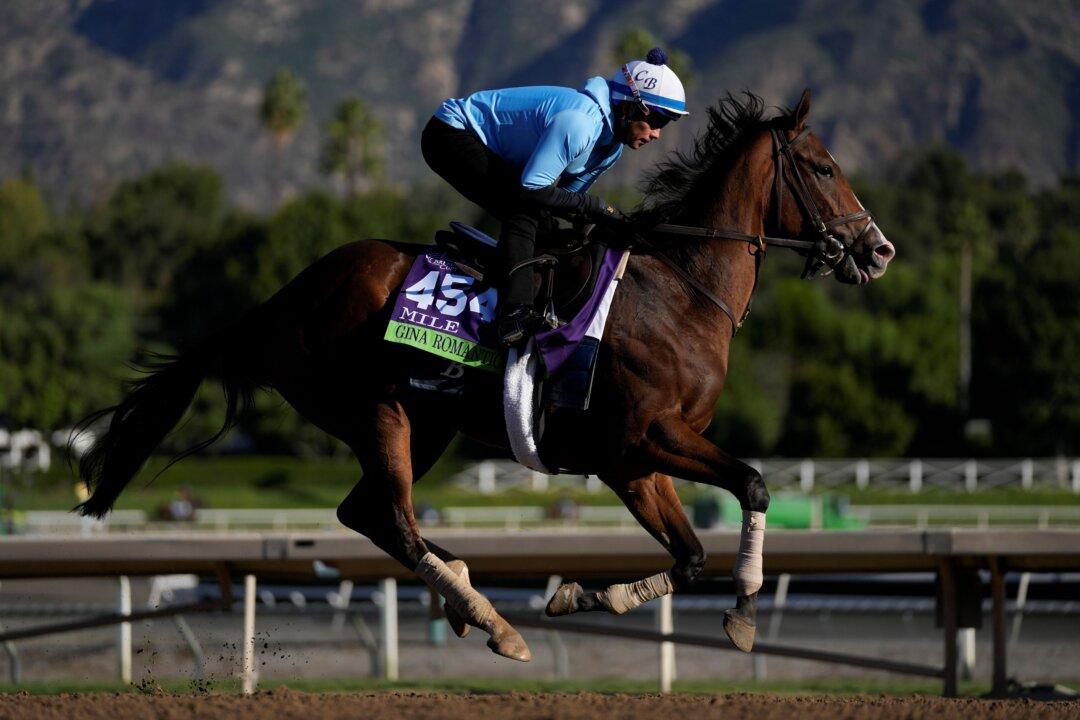ARCADIA, Calif.—After horse deaths marred this year’s Kentucky Derby and Preakness, and two more occurred days ahead of the world championships, safety at the Breeders’ Cup is under intense scrutiny.
For the first time, all 14 Cup races this weekend at Santa Anita will be run under the sport’s new national uniform set of medication and safety rules. The Horseracing Integrity and Safety Act, created by Congress under the oversight of the Federal Trade Commission, is charged with keeping horses and jockeys safe.





